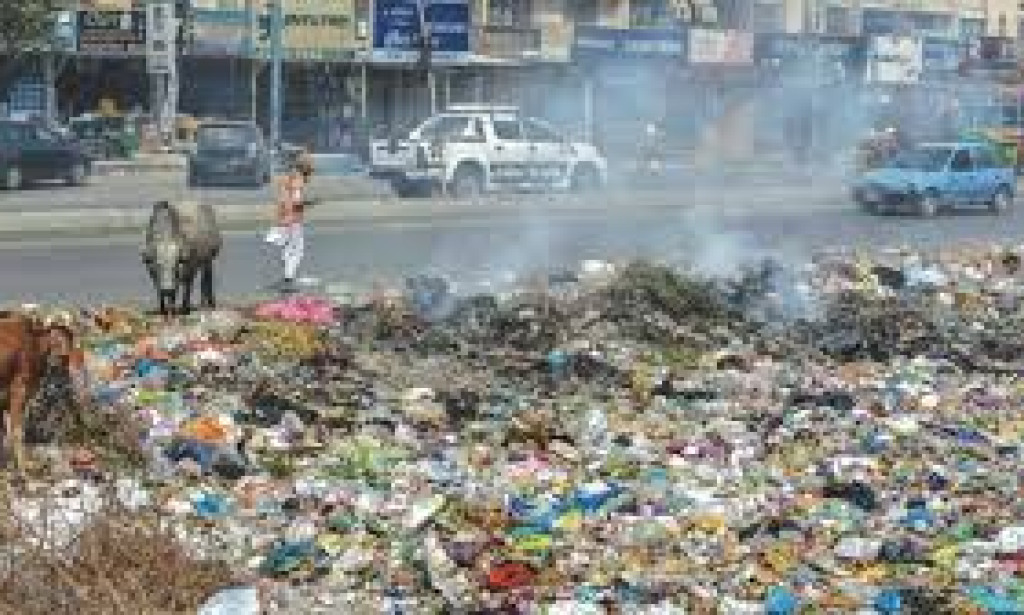The 3 Most Polluted Cities in Pakistan
Pakistan faces severe environmental challenges, with air pollution ranking among the most pressing issues. Several cities experience alarmingly high pollution levels, primarily due to industrial emissions, vehicular smoke, construction dust, and the burning of crop residues. According to global air quality reports, three of the most polluted cities in Pakistan are Lahore, Faisalabad, and Karachi. These cities consistently rank high on the Air Quality Index (AQI), often exceeding safe limits set by the World Health Organization (WHO).

1. Lahore: The Smog Capital of Pakistan
Lahore, the cultural heart of Pakistan, has become synonymous with hazardous air pollution levels. The city frequently tops the list of the world's most polluted cities, especially during winter, when thick smog blankets the skyline. Major contributors to Lahore’s air pollution include:
- Vehicular Emissions: With a rapidly increasing number of vehicles on the road, car exhaust is a significant source of pollutants such as carbon monoxide and nitrogen oxides.

- Industrial Pollution: Numerous factories in and around Lahore release dangerous chemicals and particulate matter into the air.
- Brick Kilns and Crop Burning: The burning of agricultural waste in nearby rural areas, along with emissions from traditional brick kilns, adds to the city's pollution.
- Construction and Dust: Unregulated construction activities produce high levels of dust, further worsening air quality.
Lahore’s air quality often reaches hazardous levels, causing respiratory diseases, eye infections, and severe health complications, particularly among children and the elderly.
2. Faisalabad: The Industrial Hub Choking on Smog
Faisalabad, known as Pakistan’s industrial and textile hub, is another highly polluted city. The rapid industrialization, while beneficial for the economy, has taken a significant toll on the environment. The main reasons for Faisalabad’s severe pollution are:
- Industrial Waste and Emissions: Hundreds of factories release toxic gases and chemicals into the air, contaminating both the atmosphere and water sources.
- Unregulated Transport System: Smoke-emitting trucks, buses, and motorcycles contribute heavily to the poor air quality.
- Open Waste Burning: Due to a lack of proper waste management, garbage and plastic waste are often burned, releasing harmful toxins into the air.
Faisalabad's residents frequently suffer from breathing problems, lung infections, and cardiovascular diseases due to prolonged exposure to toxic air. The lack of greenery in the city further worsens the pollution problem, as trees that could absorb carbon dioxide are scarce.

3. Karachi: The Mega City Struggling with Pollution
As Pakistan’s largest city and economic hub, Karachi faces numerous environmental challenges, including air, noise, and water pollution. With a population of over 20 million, the city experiences heavy traffic, industrial emissions, and unchecked waste disposal, all of which contribute to poor air quality.
- Industrial Zones: Karachi is home to thousands of factories, many of which do not follow environmental regulations, releasing toxic fumes into the air.
- Traffic Congestion: The city's roads are filled with vehicles that emit carbon monoxide and sulfur dioxide, leading to dangerously high AQI levels.
- Waste and Sewage Issues: Garbage burning and improper sewage disposal pollute both the air and water, making Karachi one of the most polluted cities in South Asia.
Karachi’s pollution not only affects human health but also damages marine life, as untreated industrial waste is dumped into the Arabian Sea. The residents of Karachi suffer from skin allergies, respiratory infections, and other serious health problems due to prolonged exposure to pollution.
The growing pollution crisis in Lahore, Faisalabad, and Karachi poses a severe threat to public health and the environment. While the government has taken steps such as introducing hybrid buses, banning crop burning, and shifting to eco-friendly brick kilns, more needs to be done. Stricter industrial regulations, better waste management, and an increase in urban greenery are essential to combat this rising threat. Without immediate action, the air quality in these cities will continue to deteriorate, affecting millions of lives.




You must be logged in to post a comment.